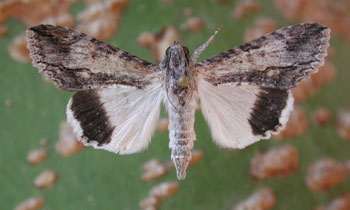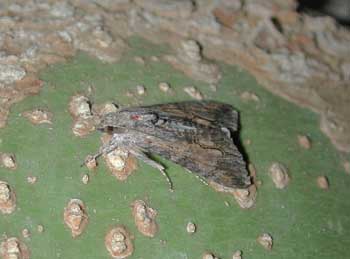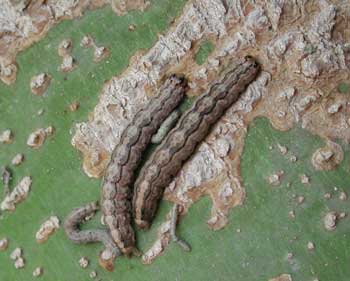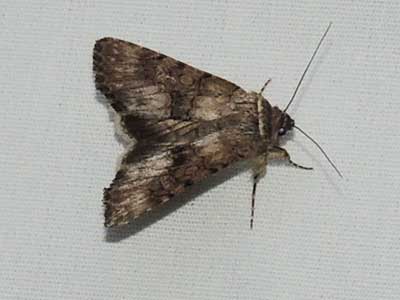Noctuid Moth
Melipotis acontioides



These insects were photographed using a Nikon CoolPix 990 in June 2005 in Phoenix, Arizona. The top photo is an adult spread for identification. The middle photo shows the normal resting position of an adult moth. At bottom are the brownish larvae (caterpillars).
The larvae (caterpillars) of Melipotis acontioides were found feeding at
night on the leaves of
Blue Palo Verde (Parkinsonia florida) in Phoenix, Arizona on
June 1, 2005. By day they hide preferring a tight spot beneath loose bark or in
my case a rag I had left draped over a branch! The term for this behavior is thigmotaxis. The caterpillars pupated in a
very loose cocoon beneath leaf litter and the adult moth emerged just three
weeks later. By feeding at night the larvae avoid intense daytime heat, but
more importantly they avoid predators like the
Paper Wasp and the Verdin bird. This is a very widespread moth being
recorded from southwestern United States to South America and the Caribbean. On
the island of Guadalupe
Pierre Zagatti recorded the larvae feeding on Flamboyant Tree (Delonix
regia), while the Texas AM website
records Jerusalem Thorn (Parkinsonia aculeata). Thus all three known
host plants are trees in the legume subfamily, Ceasalpinioidae.
2006: I did not detect these insects in the Phoenix area at all during
the year suggesting that they cannot survive year-to-year here. The forewing ground color can range from light
gray to dark gray, and my include some tawny colors as well.
2007: Not detected at all in the Phoenix area.

There are literally thousands of moth species in the Sonoran Desert. Most fly at night and are not often seen by the diurnal naturalist. The larvae are frequent on many plants and are a major source of food for insect-gleaning birds. Many moths are very specific about what kinds of plants they feed on as larvae. Also many caterpillars are crypticly colored.